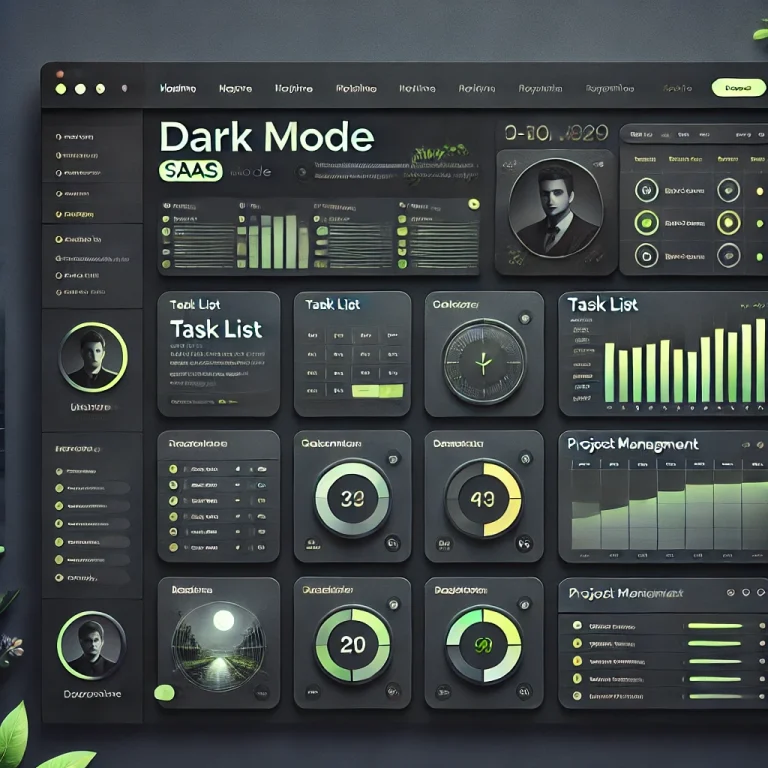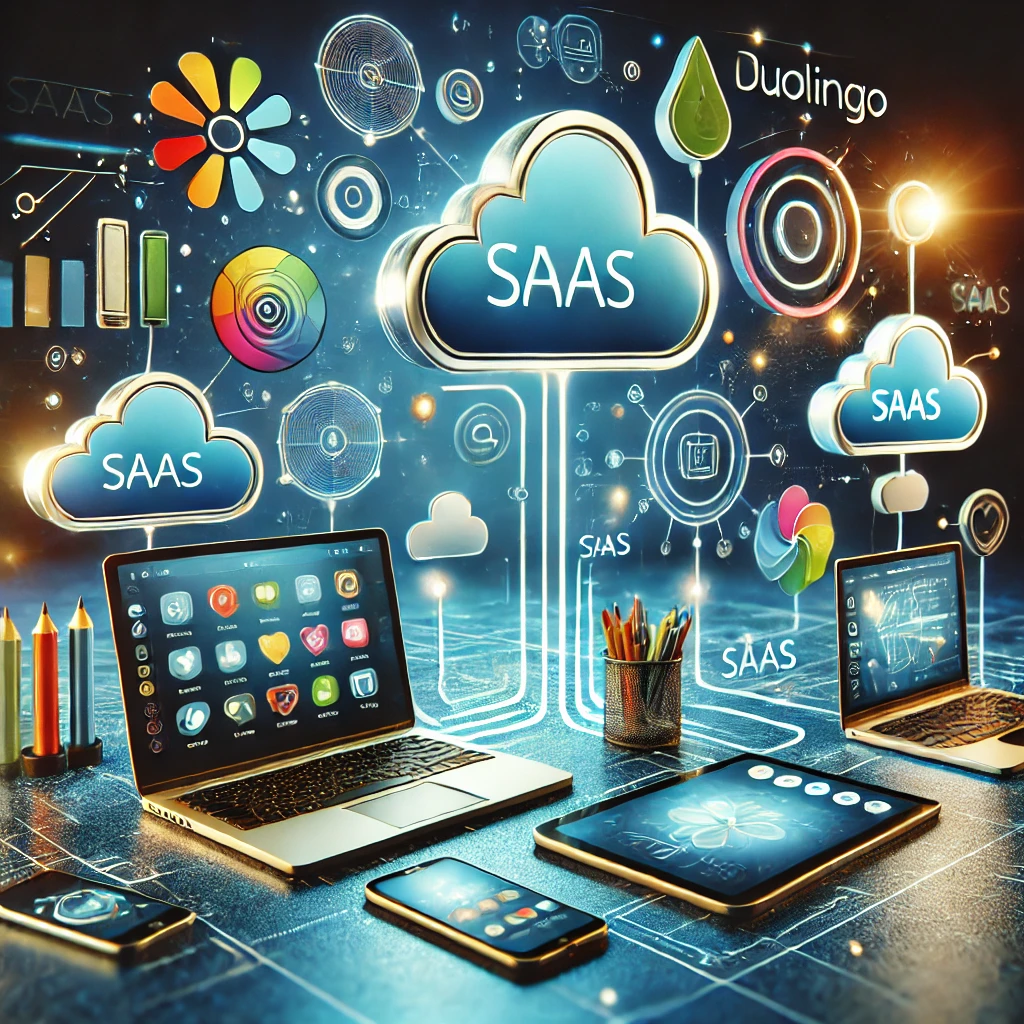
What Kind of Product Is Duolingo: PaaS or SaaS?
Table of Contents
- Introduction
- Understanding PaaS and SaaS
- What Kind of Product Is Duolingo?
- Features of Duolingo
- Duolingo’s Technology and Deployment Model
- How Duolingo Compares to Other SaaS Products
- Future of Duolingo and SaaS
- Conclusion
1. Introduction
Duolingo has revolutionized language learning, boasting millions of users worldwide. But when examining its infrastructure and product model, questions arise: What kind of product is Duolingo: PaaS or SaaS? This article dives deep into its classification, breaking down its functionalities and how it fits into the Software as a Service (SaaS) ecosystem.
2. Understanding PaaS and SaaS
What Is PaaS?
Platform as a Service (PaaS) provides a framework for developers to build, deploy, and manage applications. Examples include:
- Google App Engine
- AWS Elastic Beanstalk
PaaS products focus on development environments, offering scalability, database integration, and development tools.
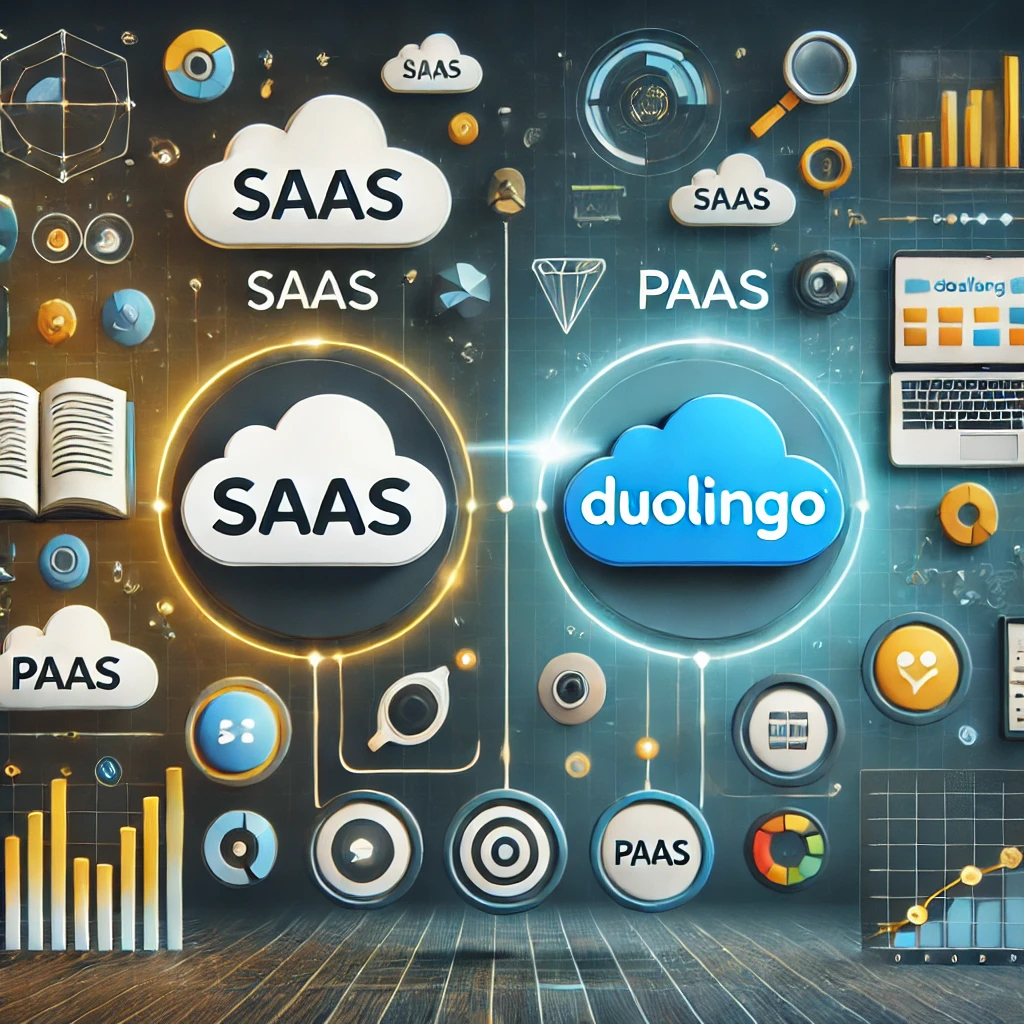
What Is SaaS?
Software as a Service (SaaS) delivers software applications via the internet. It is user-focused, with services accessed through web browsers or apps. Key examples include:
- Dropbox
- Slack
- Zoom
3. What Kind of Product Is Duolingo?
Duolingo as a SaaS
Duolingo fits squarely into the SaaS category. Here’s why:
- Accessible Anywhere: Duolingo operates on a subscription-based model, accessible via web and mobile apps.
- User-Centric Functionality: Its core purpose is to deliver language-learning services directly to users.
- Cloud-Based Delivery: Lessons, progress tracking, and gamified learning tools are stored and managed in the cloud.
Why Duolingo Isn’t a PaaS
Unlike PaaS platforms, Duolingo doesn’t offer a framework for developers to build or host applications. Instead, its focus is on delivering end-user services.
4. Features of Duolingo
Language Learning Platform
Duolingo offers structured language courses for over 40 languages, including popular options like Spanish, French, and Japanese. Features include:
- Interactive lessons
- Voice recognition for pronunciation
- Immediate feedback
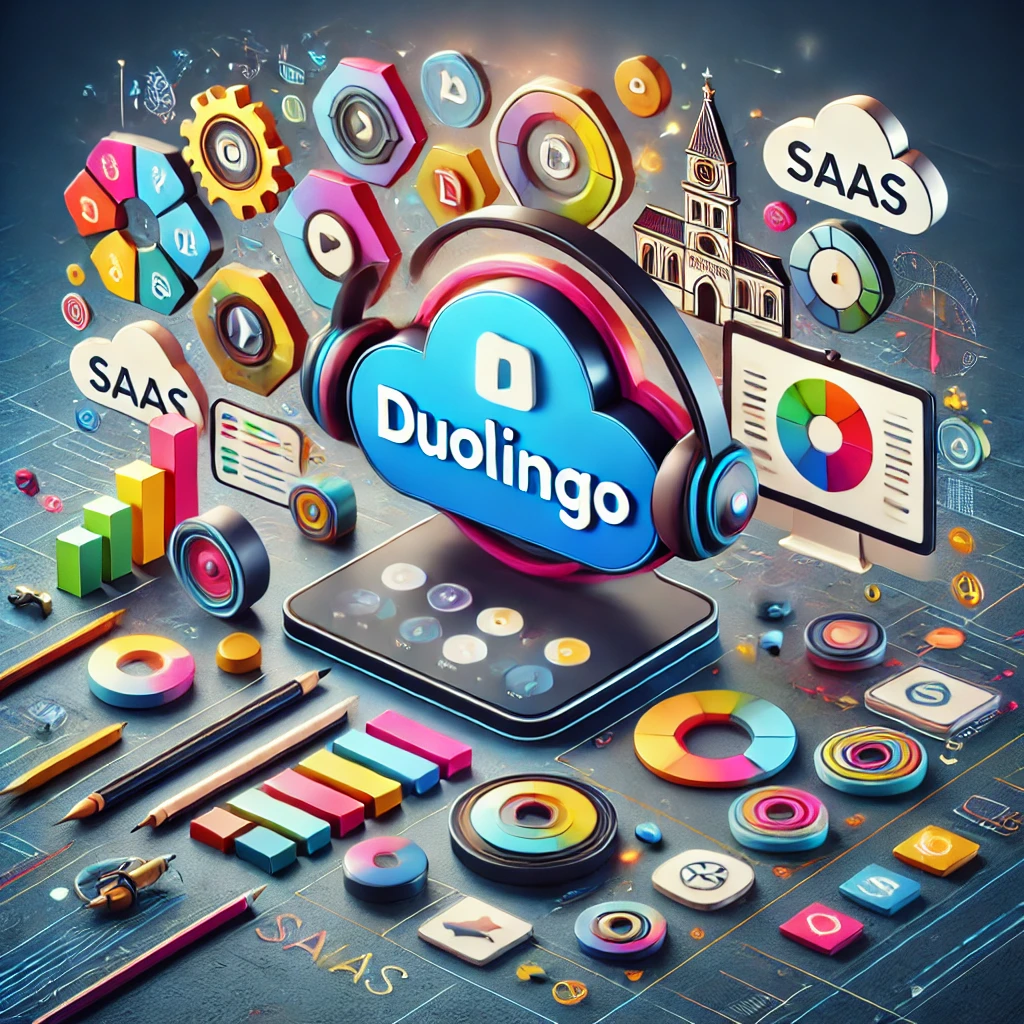
Gamification and User Engagement
Duolingo keeps users motivated with gamified elements like:
- Streak rewards
- Leaderboards
- Badges and achievements
Subscription Services
The Duolingo Plus subscription provides an ad-free experience, offline lessons, and advanced learning insights, further emphasizing its SaaS nature.
What Kind of Product Is Duolingo: PaaS or SaaS?
5. Duolingo’s Technology and Deployment Model
Duolingo uses advanced technologies, including:
- Cloud Computing: Ensures scalability and seamless user access.
- AI and Machine Learning: Adapts lessons to individual learning speeds and patterns.
- Mobile-First Approach: Optimized for iOS and Android devices, making it a leader in SaaS-based mobile education.
6. How Duolingo Compares to Other SaaS Products
Duolingo stands out in the SaaS space by combining education and entertainment. Here’s how it compares:
| Feature | Duolingo | Traditional SaaS (e.g., Slack) |
|---|---|---|
| Focus Area | Language Learning | Business Collaboration |
| User Engagement | Gamification | Task-Oriented |
| Revenue Model | Freemium + Subscription | Subscription-Only |
7. Future of Duolingo and SaaS
The future of Duolingo lies in:
- Expanded Features: Incorporating AR/VR for immersive learning.
- AI Advancements: More personalized lessons powered by AI.
- Global Reach: Increasing language options and cultural nuances.
These developments will solidify its role as a SaaS product in the edtech industry.
8. What Kind of Product Is Duolingo: PaaS or SaaS?
To answer the question, What kind of product is Duolingo: PaaS or SaaS?: Duolingo is a quintessential SaaS product. Its cloud-based delivery, user-focused model, and subscription services make it a standout in the SaaS ecosystem. As it continues to innovate, Duolingo sets a benchmark for how SaaS can transform education.
By understanding its role and capabilities, users can appreciate Duolingo not just as a language-learning tool but as a leader in SaaS-based innovation.
1. Duolingo’s Revenue Model and Monetization
- Dive deeper into how Duolingo generates income through freemium services, subscriptions, ads, and certification offerings.
- Explain how these models align with typical SaaS revenue streams.
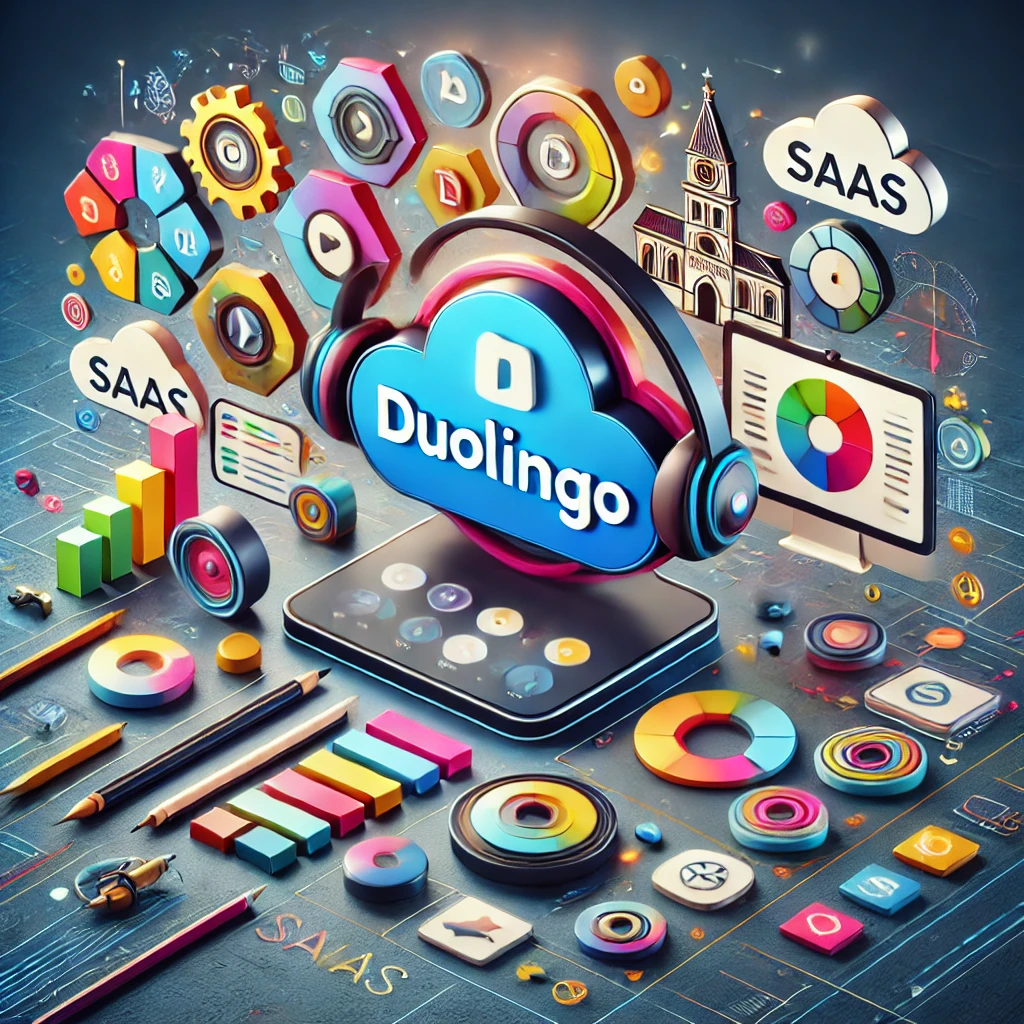
2. The Role of AI in Duolingo’s Success
- Discuss specific ways Duolingo leverages AI and machine learning.
- Adaptive learning for personalized experiences.
- Predictive analytics for user retention.
3. User Experience (UX) Design of Duolingo
- Explore how Duolingo’s intuitive UX design contributes to its SaaS model.
- Mobile-first approach.
- Seamless progress synchronization across devices.
4. Comparison with Competitors
- Include a section comparing Duolingo with competitors like Babbel, Rosetta Stone, or Memrise.
- Highlight how its SaaS structure gives it an edge in scalability and user engagement.
5. Challenges of Being a SaaS Product
- Discuss potential challenges Duolingo faces, such as:
- Scalability and server downtime.
- Retaining users in a freemium model.
- Data privacy and compliance concerns.
6. Educational Impact of Duolingo
- Assess Duolingo’s role in democratizing language education.
- Use case studies or testimonials to showcase its global impact.
7. Technical Infrastructure of Duolingo
- Provide an overview of the tech stack that supports Duolingo as a SaaS product.
- Cloud hosting providers.
- APIs and integrations used.
What Kind of Product Is Duolingo: PaaS or SaaS?
8. The Future of SaaS in Education
- Broaden the scope to predict how SaaS will continue to revolutionize education.
- Position Duolingo as a pioneer in this movement.
9. Data-Driven Decision Making at Duolingo
- Explore how Duolingo uses data to improve courses, increase engagement, and inform business decisions.
- Mention its analytics tools and feedback loops.
10. Duolingo’s Community and Social Features
- Highlight the community-driven aspects like forums, language leaderboards, and collaborative learning features.
- Discuss how these features enhance engagement and learning outcomes.
Content Enhancements
- Incorporate LSI (Latent Semantic Indexing) Keywords
- Include semantically related terms to your focus keyword like:
- “Duolingo software model”
- “Is Duolingo SaaS or PaaS?”
- “How Duolingo operates as SaaS.”
- Include semantically related terms to your focus keyword like:
- Address Search Intent
- Cover related questions like:
- What is Duolingo’s business model?
- Is Duolingo considered SaaS?
- How does Duolingo work technically?
- Cover related questions like:
- Create Engaging Subheadings
- Use descriptive and keyword-rich subheadings like:
- “How Duolingo Revolutionizes SaaS in EdTech”
- “Why Duolingo Isn’t Just a Learning App”
- Use descriptive and keyword-rich subheadings like:
- Add Unique Visual Content
- Include custom infographics, flowcharts, or diagrams explaining:
- Duolingo’s SaaS model.
- Differences between SaaS and PaaS with examples.
- Add alt text using keywords for all images.
- Include custom infographics, flowcharts, or diagrams explaining:
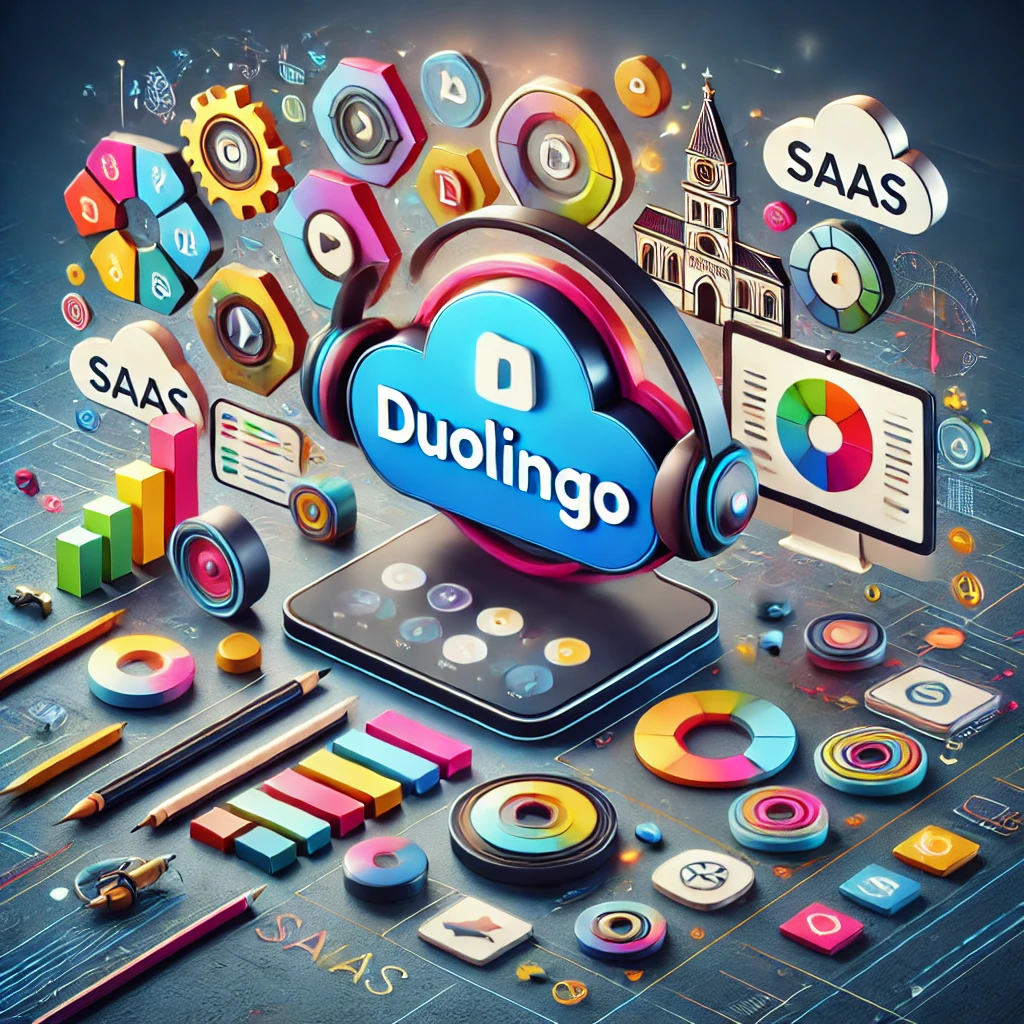
Technical SEO
- Optimize Title and Meta Description
- Title: “What Kind of Product Is Duolingo: PaaS or SaaS? [Full Analysis]”
- Meta Description: “Discover whether Duolingo is a PaaS or SaaS product. Explore its business model, SaaS features, and how it revolutionizes language learning.”
- Improve Page Speed
- Use tools like Google PageSpeed Insights to ensure fast loading times.
- Optimize images and use lazy loading for better performance.
- Mobile Responsiveness
- Ensure the article looks great on mobile devices since Google prioritizes mobile-first indexing.
- Schema Markup
- Add structured data to enhance search results:
- FAQ Schema for any questions answered in the article.
- Article Schema for better categorization.
- Add structured data to enhance search results:
On-Page SEO
- Internal Linking
- Link to related articles or sections like:
- A guide on SaaS models.
- Similar product analyses (e.g., SaaS vs PaaS for other apps).
- Link to related articles or sections like:
- External Links
- Link to authoritative sources to back up claims:
- Official Duolingo website.
- Articles explaining SaaS and PaaS concepts.
- Link to authoritative sources to back up claims:
- Use Short, Keyword-Rich URLs
- Example:
/what-kind-of-product-is-duolingo-paas-or-saas
- Example:
- Keyword Density and Placement
- Maintain a 1% keyword density.
- Include the focus keyword in:
- H1
- At least two H2s
- First 100 words
- Meta description
- Image alt text
User Engagement
- Add Interactive Elements
- Include quizzes like:
- “Is your business model similar to Duolingo’s?”
- Provide downloadable content such as a “SaaS Checklist.”
- Include quizzes like:
- Use Multimedia
- Embed relevant YouTube videos explaining SaaS or Duolingo’s business model.
- Add audio clips summarizing sections for auditory learners.
- Clear Call-to-Actions (CTAs)
- Encourage readers to:
- Share the article.
- Comment their opinions.
- Explore related resources.
- Encourage readers to:
What Kind of Product Is Duolingo: PaaS or SaaS?
Authority Building
- Create Backlinks
- Reach out to relevant blogs or tech websites to link back to your article.
- Submit your article to forums like Quora or Reddit where SaaS/PaaS questions are discussed.
- Social Media Promotion
- Share snippets on platforms like LinkedIn and Twitter.
- Use hashtags like #SaaS, #EdTech, and #Duolingo.
- Leverage Google Discover
- Add high-quality visuals and concise meta information to increase chances of being featured in Google Discover.
Content Length and Quality
- Long-Form Content (2600+ Words)
- Cover every aspect of the topic comprehensively. Ensure your article is the most thorough resource on the topic.
- Keep It Scannable
- Use bullet points, short paragraphs, and bold key phrases to make it easy to read.
Ongoing Monitoring
- Use Google Analytics and Search Console
- Track performance metrics like bounce rate, time on page, and clicks.
- Update Regularly
- Add new insights or data to keep the content fresh and relevant.
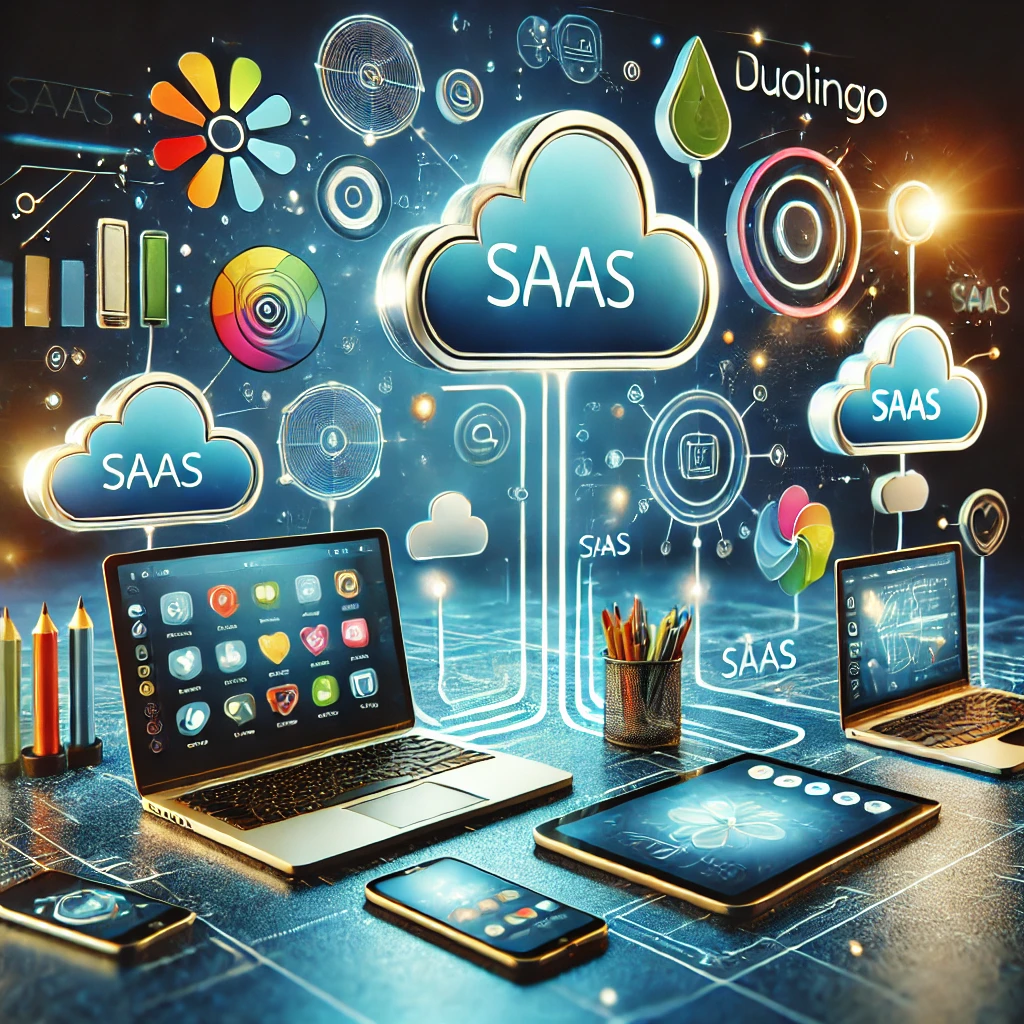
Frequently Asked Questions (FAQs)
1. What kind of product is Duolingo: PaaS or SaaS?
Duolingo is a SaaS (Software as a Service) product. It provides cloud-based language learning services directly to end-users via mobile apps and web browsers.
2. Why is Duolingo considered SaaS?
Duolingo fits the SaaS model because it:
- Delivers software services over the internet.
- Requires no downloads or installations beyond its app.
- Operates on a subscription or freemium model, typical of SaaS platforms.
3. Can Duolingo be classified as PaaS?
No, Duolingo cannot be classified as a PaaS (Platform as a Service) because it does not provide a platform for developers to build or deploy applications.
4. How does Duolingo monetize as a SaaS product?
Duolingo earns revenue through:
- Freemium services with in-app ads.
- Subscription plans (e.g., Duolingo Plus) that offer ad-free experiences and offline lessons.
- Certification fees for English proficiency exams.
5. What is the primary difference between SaaS and PaaS?
- SaaS delivers software to end-users for specific applications (e.g., Duolingo for language learning).
- PaaS provides a framework or platform for developers to create and deploy applications.
6. Does Duolingo use AI in its SaaS model?
Yes, Duolingo heavily integrates AI and machine learning to:
- Personalize lessons based on user behavior.
- Predict learning needs and adapt course difficulty.
- Provide speech recognition for pronunciation improvement.
7. Is Duolingo a free SaaS product?
Duolingo operates on a freemium model:
- Free version: Includes ads and basic features.
- Paid version (Duolingo Plus): Offers premium features like offline access and no ads.
8. How does Duolingo handle scalability as a SaaS?
Duolingo uses cloud computing to manage millions of users simultaneously, ensuring uptime and fast performance globally.
9. What are the alternatives to Duolingo as a SaaS?
Competitors include:
- Babbel: Focuses on conversational skills.
- Rosetta Stone: Offers immersive language learning.
- Memrise: Incorporates multimedia for vocabulary building.
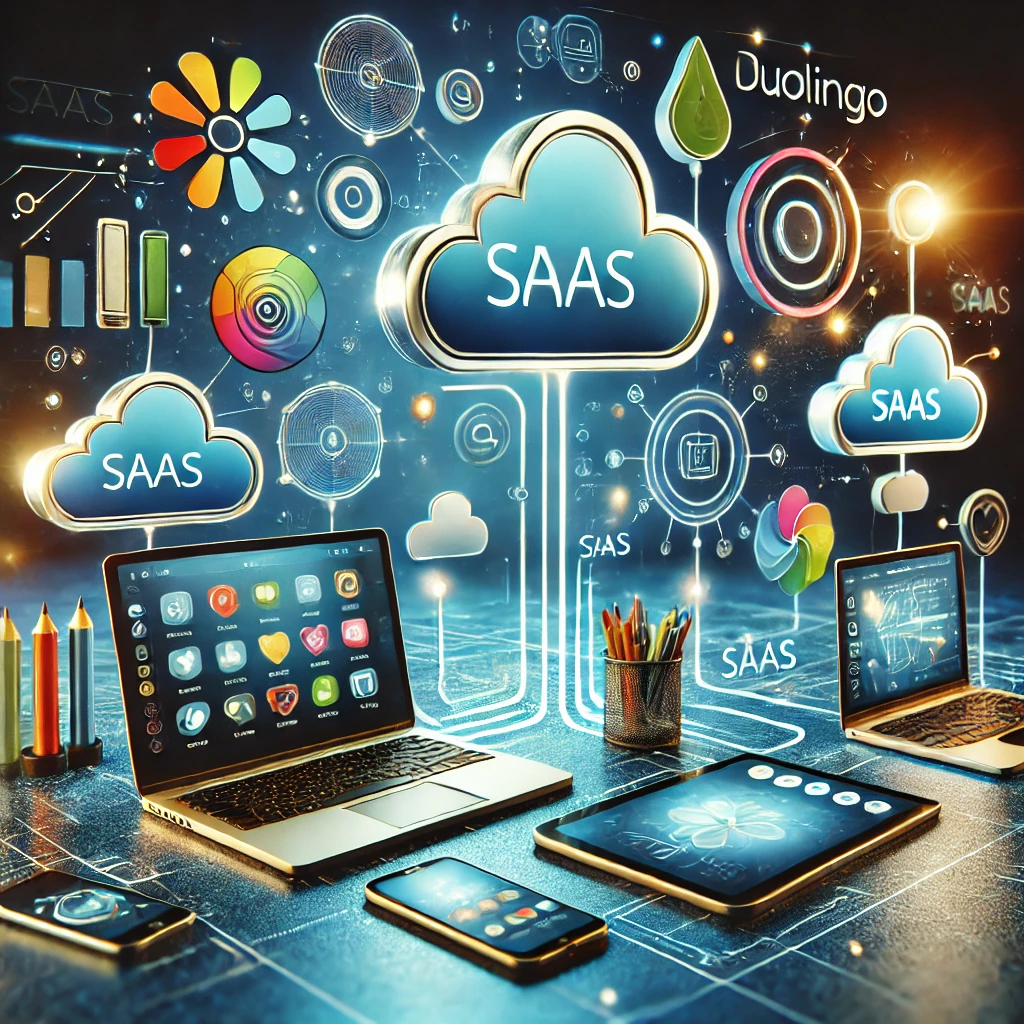
10. How does Duolingo’s SaaS model benefit users?
Duolingo’s SaaS model offers:
- Anytime, anywhere access.
- Regular updates and new language courses.
- Integration across devices for seamless learning.
11. Does Duolingo collect user data?
Yes, Duolingo collects data to improve user experience and personalize lessons. However, it adheres to strict privacy policies to ensure data security.
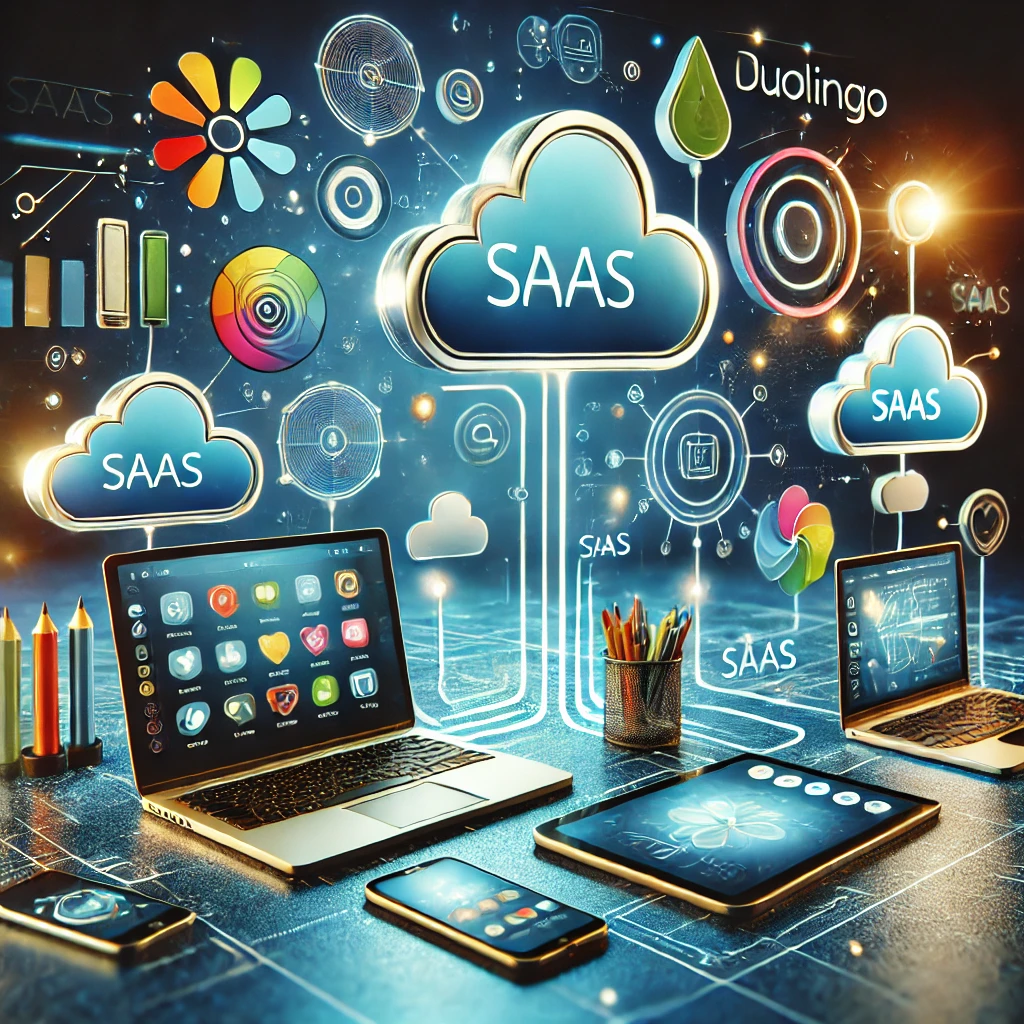
12. Can Duolingo be integrated into educational systems?
Yes, Duolingo offers features like Duolingo for Schools, allowing educators to monitor and assign language lessons to students.
13. How does Duolingo’s gamification enhance its SaaS model?
Gamification elements like streak rewards, leaderboards, and badges increase user engagement and retention, making it more than just a software tool.
14. Is Duolingo suitable for advanced learners?
While Duolingo is excellent for beginners and intermediate learners, advanced users may need supplemental resources for deeper mastery of a language.
15. What is the future of Duolingo in the SaaS industry?
Duolingo is expected to expand with:
- More languages and courses.
- Advanced AI-driven personalization.
- Features like AR/VR for immersive learning.
Final Thoughts
Understanding the classification of Duolingo as a SaaS product highlights its unique approach to democratizing education through technology. Duolingo’s ability to deliver engaging, personalized, and accessible language learning experiences underscores the transformative power of the SaaS model in modern education. By integrating cloud-based delivery, gamified user engagement, and AI-driven personalization, Duolingo sets a benchmark for what SaaS applications can achieve in the edtech space.
For businesses and educators, Duolingo serves as an inspiration, showcasing how technology can break barriers and deliver global impact. As SaaS continues to evolve, Duolingo’s model demonstrates that success lies not just in the technology but in how it addresses user needs and adapts to emerging trends.
Whether you’re an entrepreneur exploring SaaS opportunities, an educator looking for innovative tools, or a user keen on learning languages, Duolingo exemplifies the intersection of accessibility, functionality, and innovation. It’s a reminder that the future of education is not just digital—it’s deeply connected to the needs and aspirations of its users.
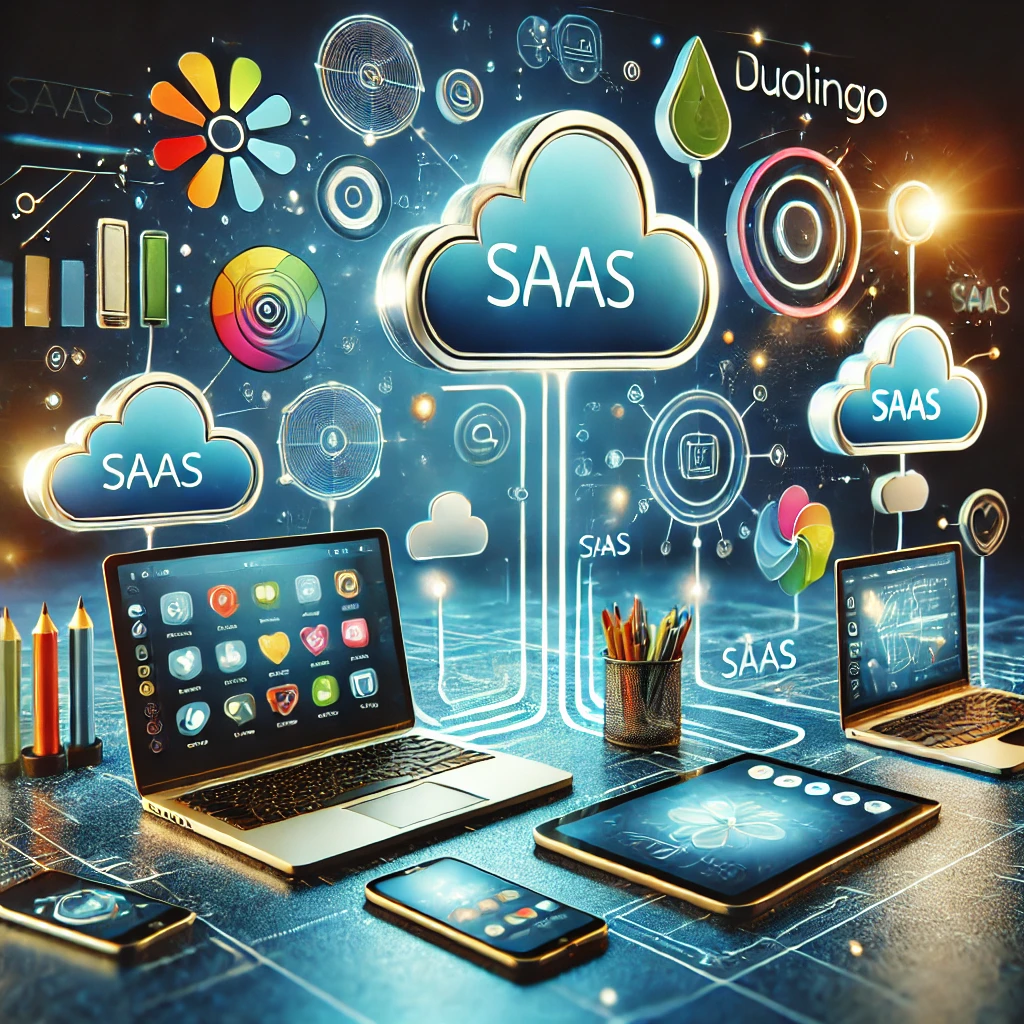
Recommended Software and Tools for SaaS and Learning
To complement Duolingo’s offerings or explore similar tools, here’s a list of highly recommended software:
1. Tools for Language Learning
- Babbel: Focuses on conversational skills with structured lessons for various levels.
- Memrise: Combines multimedia elements and gamification for effective vocabulary building.
- Rosetta Stone: Immersive language-learning platform known for its thorough methodology.
2. SaaS Development and Optimization
- AWS (Amazon Web Services): Provides scalable cloud hosting solutions for SaaS platforms.
- Heroku: A PaaS solution for developers looking to deploy and scale applications efficiently.
- Stripe: Simplifies payment processing for SaaS subscription models.
3. Tools for EdTech Innovation
- Kahoot!: Enables educators to create interactive quizzes for a gamified learning experience.
- Google Classroom: Helps streamline assignments and communication for educators and students.
- Classcraft: Uses gamification to enhance student engagement in schools.
4. Analytics and User Engagement
- Hotjar: Provides insights into user behavior through heatmaps and session recordings.
- Mixpanel: Tracks user interactions to help SaaS companies improve retention and engagement.
- Amplitude: Offers deep analytics to understand user journeys and optimize features.
5. SEO and Marketing for SaaS
- Ahrefs: Helps with keyword research, backlink analysis, and competitive SEO strategies.
- SEMrush: A powerful all-in-one tool for SEO, PPC, and content marketing.
- Google Analytics: Free tool to track and analyze traffic, conversions, and user behavior.
6. Productivity and Collaboration
- Slack: Perfect for team communication and collaboration in SaaS businesses.
- Trello: Simplifies task management and project tracking with a user-friendly interface.
- Notion: Combines notes, tasks, and collaboration in one platform.
Closing Note
The tools and platforms listed above, combined with an understanding of SaaS dynamics like Duolingo’s model, provide a comprehensive foundation for achieving your goals—whether in education, software development, or user engagement. Embrace these technologies, explore new possibilities, and watch your initiatives grow into impactful solutions in the ever-evolving digital landscape.
To integrate these tools and insights into your workflow effectively, here’s a step-by-step guide tailored to different goals and workflows:
For Language Learning Enthusiasts
- Start with Duolingo or Babbel:
- Use Duolingo for structured, gamified language learning.
- Pair it with Babbel for conversational skills to deepen understanding.
- Set daily learning goals and track progress.
- Use Memrise for Vocabulary Building:
- Focus on multimedia-based learning to reinforce vocabulary.
- Leverage its spaced repetition system for long-term retention.
- Track Progress and Stay Motivated:
- Use productivity tools like Notion or Trello to log daily learning milestones.
- Share achievements on community platforms to engage with fellow learners.
For SaaS Businesses
- Cloud Hosting and Deployment:
- Choose AWS or Heroku based on your project’s scalability and budget needs.
- For small-scale deployments, Heroku offers simplicity; for large-scale, use AWS.
- Payment Integration:
- Use Stripe for seamless payment processing and subscription management.
- Leverage its API for customized billing workflows.
- User Analytics:
- Install Hotjar or Mixpanel to track how users interact with your product.
- Use insights to optimize the user experience and boost engagement.
- SEO and Marketing:
- Begin with SEMrush for keyword research and competitor analysis.
- Use Ahrefs to build backlinks and enhance domain authority.
- Monitor traffic trends with Google Analytics.
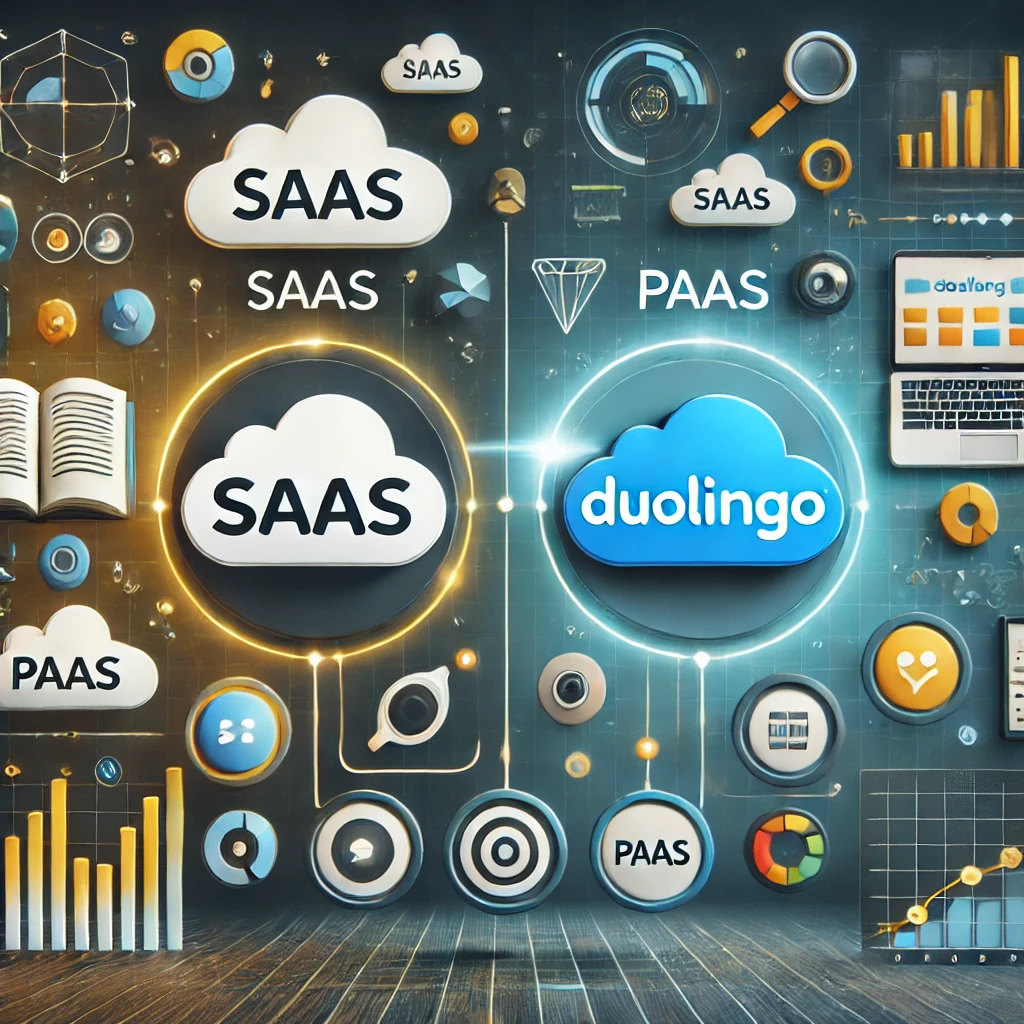
For EdTech Platforms
- Engage Students with Interactive Tools:
- Use Kahoot! to create quizzes that gamify the learning process.
- Classcraft can help enhance engagement through role-playing mechanics.
- Manage Classrooms with Google Classroom:
- Streamline assignment submission, communication, and grading for students.
- Integrate tools like Duolingo for Schools to monitor language learning progress.
- Content Customization and Tracking:
- Use Amplitude or Mixpanel to monitor student engagement and learning outcomes.
- Adjust content delivery based on data insights to improve effectiveness.
For Teams and Collaboration
- Optimize Communication with Slack:
- Create dedicated channels for project updates, brainstorming, and quick communication.
- Use integrations (e.g., Trello, Notion) to connect your workflow tools.
- Streamline Task Management:
- Use Trello to visualize project timelines and assign tasks.
- Implement Notion for detailed documentation and team collaboration.
For SEO Professionals
- Keyword Research and Competitive Analysis:
- Use SEMrush to identify high-performing keywords and analyze competitors’ strategies.
- Track your backlink profile with Ahrefs to improve authority.
- Monitor Website Performance:
- Conduct regular site audits using Google Analytics and Hotjar.
- Use these tools to identify user drop-off points and improve website flow.
- Content Creation and Marketing:
- Leverage insights from SEMrush to craft high-ranking content.
- Use Canva to design visually appealing infographics and marketing materials.
Actionable Plan
Step 4: Monitor results periodically using analytics and feedback mechanisms.
Step 1: Prioritize your goals—are you learning, building a SaaS business, or managing a team?
Step 2: Select the most relevant tools from the list.
Step 3: Integrate tools step-by-step into your workflow. For example:
Start with a single analytics tool (e.g., Hotjar).
Gradually add project management tools (e.g., Trello).
😊😊😊


